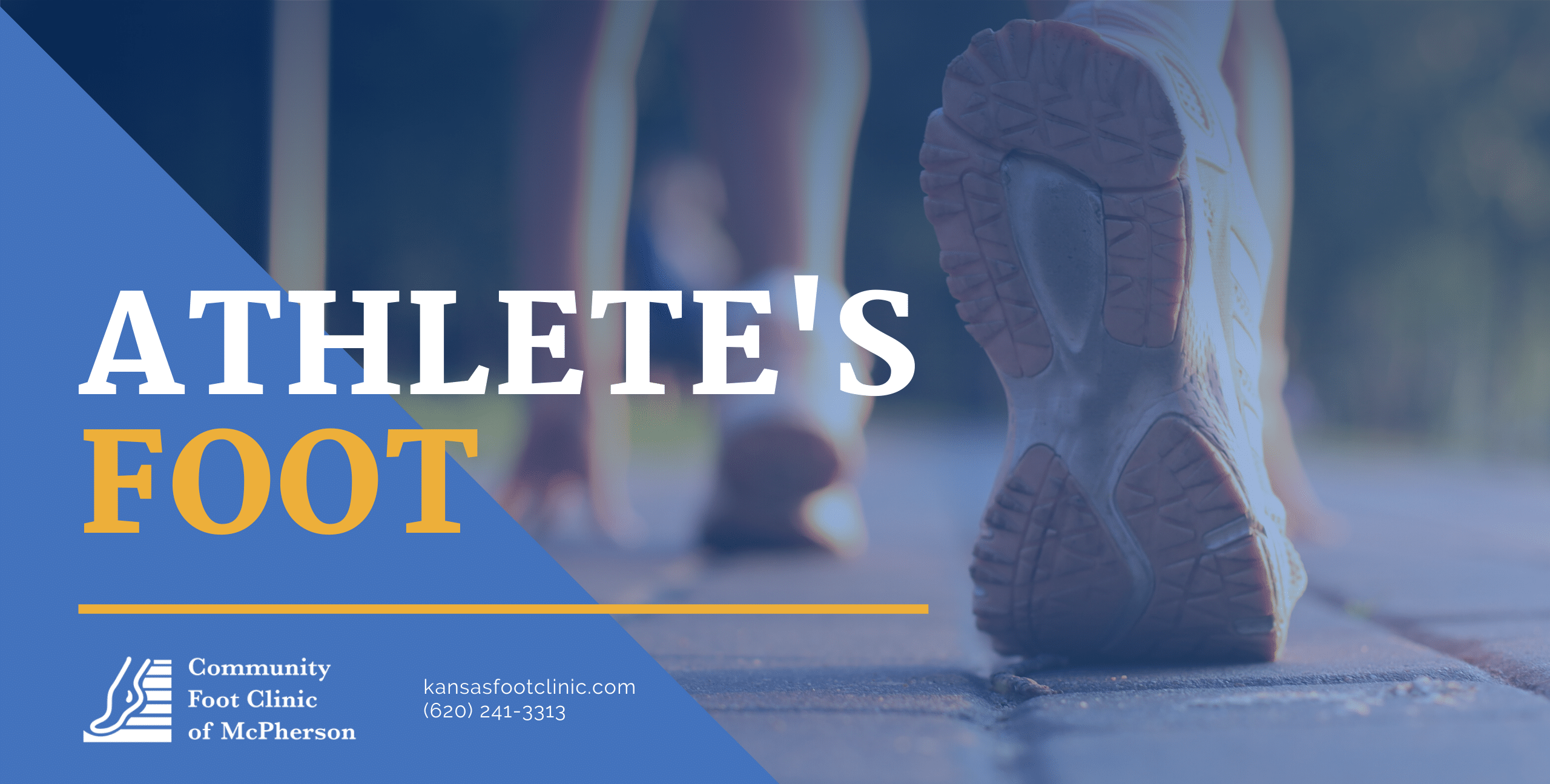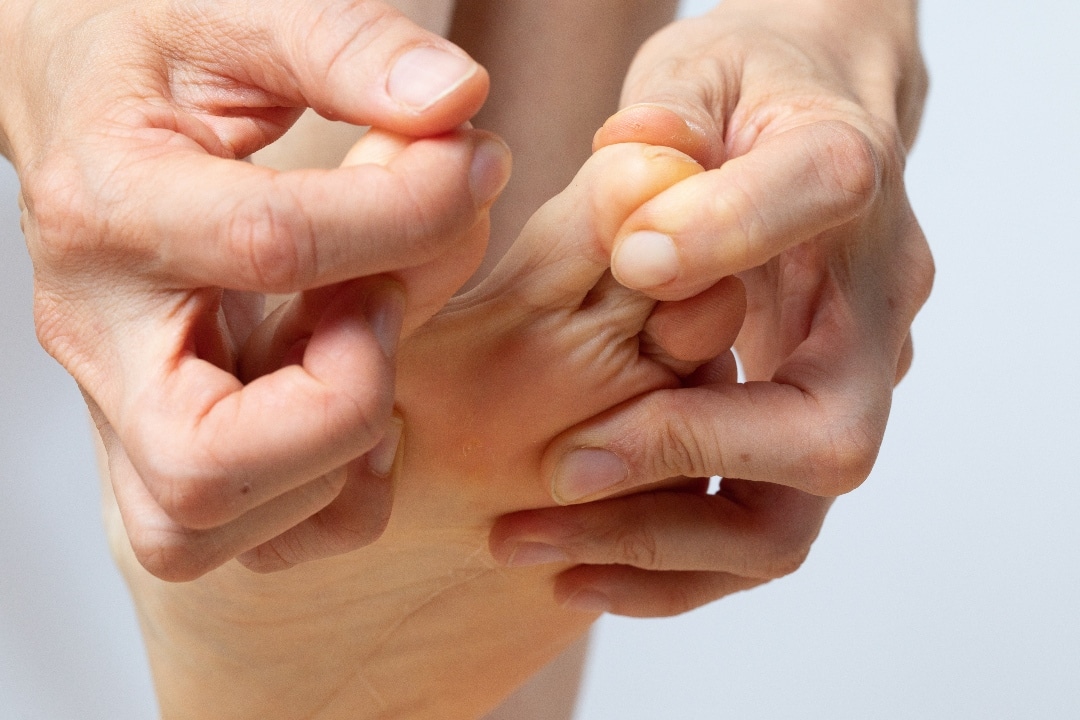Athlete's Foot
They itch, they burn, they feel dry and all-around uncomfortable. Saying that athlete’s foot is unpleasant is an understatement.
In addition to an extremely uncomfortable itchy rash, the infection is contagious, unsightly, and can sometimes be hard to eliminate. Even worse—without proper treatment, it can spread to your toenails and cause an infection that’s even more resistant to treatment.
Fortunately, athlete’s foot doesn’t have to interrupt your life. You can beat the burn and eliminate the infection, usually at home using over-the-counter products. And if those aren’t working, give us a call for some stronger options.
Do I Really Have Athlete’s Foot?
It’s not a silly question! After all, there are a wide variety of skin conditions that can produce at least superficially similar symptoms, including eczema, psoriasis, dermatitis, cellulitis, or even just excessively dry skin.
In most cases of athlete’s foot, the scaly and red rash tends to be especially concentrated along the tops of your feet and in the spaces between your toes. (This isn’t always true, however, as the “moccasin” form of athlete’s foot tends to affect the soles of your feet.)
The skin may appear cracked or raw, and the itchiness tends to be worst right after you take off your socks and shoes.
If these symptoms sound familiar to you, it’s very likely you have athlete’s foot. However, we may still need to perform a few tests to be sure, especially if home treatment isn’t working.

What Causes Athlete’s Foot? How Did I Get It?
Athlete’s foot is a fungal infection, caused by any of a group of fungi known as dermatophytes. They thrive in damp, warm atmospheres and easily transfer between surfaces.
You may be more likely to encounter the fungi and contract athlete’s foot if you:
- Go barefoot in public places, especially ones with humid environments like pools, locker rooms, community showers, and saunas.
- Don’t change your shoes and socks once they become damp, or don’t allow shoes to fully dry out before wearing them again.
- Wear especially tight shoes.
- Live or work in especially hot or humid conditions.
Do I Really Need to Treat Athlete’s Foot?
We strongly recommend that you do, regardless of your health status. In addition to being uncomfortable, athlete’s foot can easily spread to your toenails, or even to the people you live with. There’s no reason to keep suffering, and many reasons to stop it before it gets worse.
Additionally, if you have diabetes, you should take athlete’s foot very seriously and call us right away. The cracked, weakened, and damaged skin caused by athlete’s foot can greatly increase your susceptibility to contracting a more serious secondary bacterial infection.

How Do I Get Rid of Athlete’s Foot?
Home Care
The first choice for a new case of athlete’s foot, especially one that is still mild, is home treatment using an over-the-counter antifungal cream or spray. (As mentioned, do call us first if you have diabetes, however.)
Follow the directions on the package for athlete’s foot and fully complete the treatment course. Don’t stop early if your symptoms seem to clear up ahead of schedule—you want to make sure the fungi have been completely eradicated.
You should also treat the inside of your shoes with an antifungal powder or spray. Fungi can easily transfer from your feet to your shoes and back again, re-exposing you to the condition each time you put your shoes back on.
If home treatments aren’t working, or you keep getting athlete’s foot again and again anyway, please make an appointment to come see Dr. Timson.
Professional Treatment
As stated earlier, the first step we’ll take is usually to confirm the diagnosis. This may require us to take a small sample of your skin for analysis at a lab. If it turns out you have a completely different condition, such as dermatitis, you will obviously need a much different treatment plan.
If athlete’s foot is confirmed, we may need to prescribe you a stronger topical or antifungal medication than what you can get over the counter. Other medications, such as topical steroids or oral antibiotics, may also be provided to help manage symptoms and control any secondary bacterial infections.
Additionally, we will want to talk with you about your lifestyle, your activities, or even your shoes in order to identify any potential risk factors that may be causing your athlete’s foot, and give you the guidance you need to prevent it in the future.
No More Itchy, Burning Feet!
If you are having trouble getting your athlete’s foot under control—or you’re not even sure you even have athlete’s foot in the first place—please don’t hesitate to give our office a call.
This problem is very common and very treatable, and we would be glad to help you. Click here to request an appointment online, or give us a call directly at (620) 241-3313.
© Community Foot Clinic of McPherson. All Rights Reserved.
Privacy Policy | Terms & Conditions
Web Design by CP Solutions
Marketed by VMD Services
